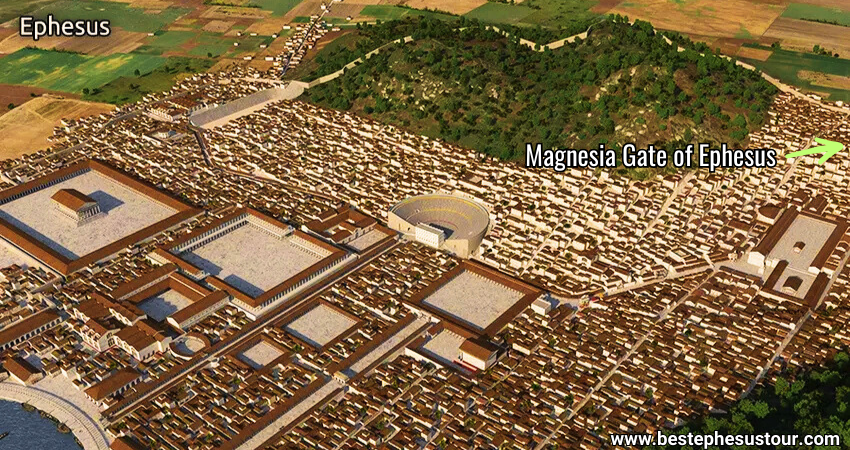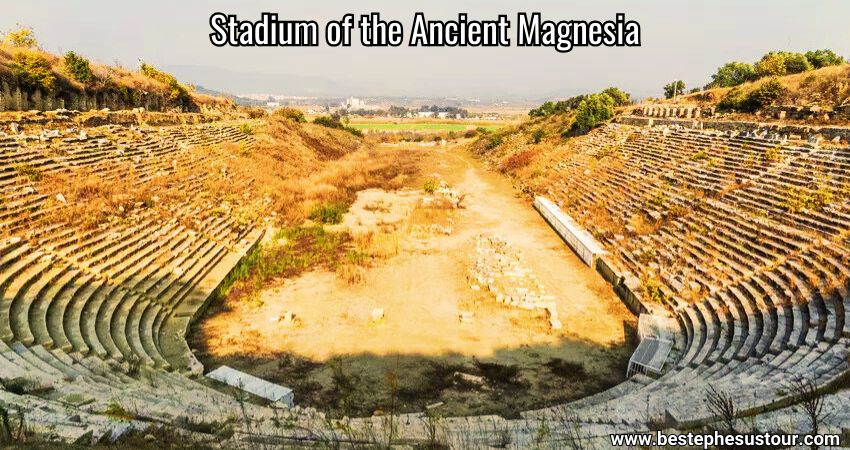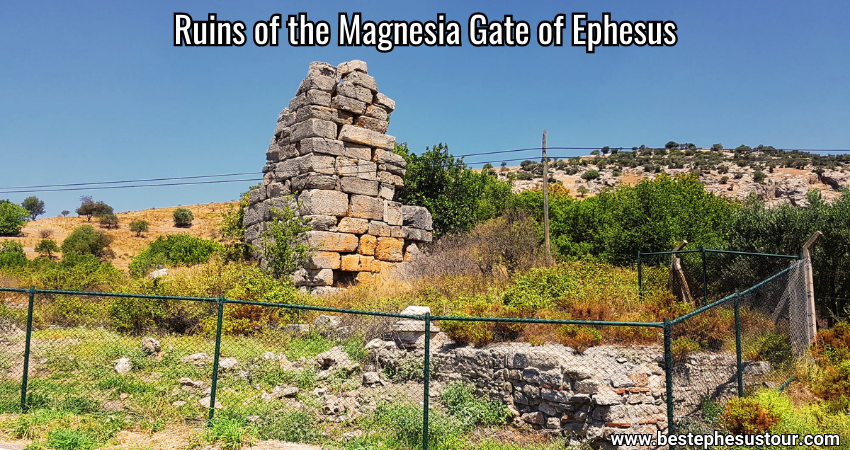Magnesia was an important ancient city located 30 kilometers east of the Ancient City of Ephesus. The Magnesia Gate, situated at the beginning of the road connecting Ephesus to Magnesia, derived its name from this connection.
Table of Contents
Construction and Evolution

The Magnesia gate of the Ephesus Ancient City was originally constructed in the 3rd century B.C. alongside the Hellenistic walls. During the Roman Peace period, the walls lost their defensive significance, and Emperor Vespasianus (69–79 A.D.) renamed the gate “The Gate of Honor.” He modified its structure by adding three entrances and giving it an arched design.
Architectural Features
- Hellenistic Period Design: On either side of the gate were two high, square-shaped towers, and the city side included a courtyard.
- Defensive Functionality: Due to the gates being the weakest points of city defenses, enemies frequently targeted them. If attackers breached the first gate, they would find themselves trapped in the courtyard, where city soldiers (astactic) would ambush them from behind the second wall.
- Courtyard and Square: The large square in front of the gate and courtyard was constructed from gray stone blocks. Tombs, likely belonging to prominent individuals, were placed in this area, as the city necropolis began immediately outside the walls.

Water Canal and Road
A significant water canal on the square’s east side was added long after Emperor Vespasianus’ time.
The road passing through the Magnesia Gate served multiple purposes:
- One end is connected to Magnesia.
- The other side wound up the mountain, leading to the Artemis Temple before looping back to Ephesus.
- The road then concluded again at the Magnesia Gate, forming a key artery within the city.

Historical Context and Planning
According to inscriptions, the road was restored by Sage Damianus of Ephesus in the 2nd century A.D. The city of Ephesus was designed according to the plans of Hippodamus, a Miletian architect, where streets were laid out in a perpendicular grid. However, the sacred road to the Artemis Temple did not follow this grid. This deviation occurred because the road had been established long before Lysimakhos‘ city planning during the Hellenistic era. The Temple of Artemis was rediscovered by John Turtle Wood, who followed this road using information from an inscription.





